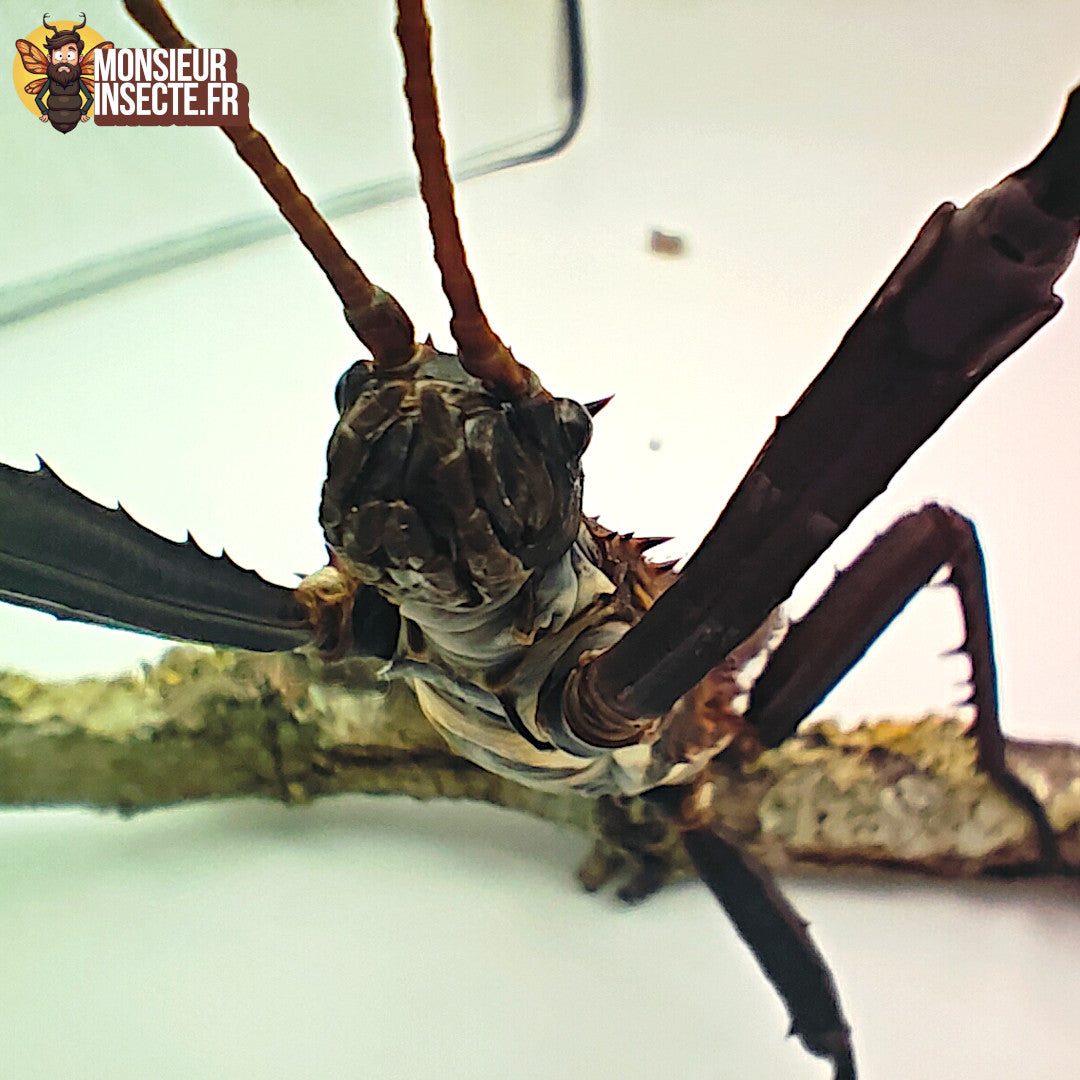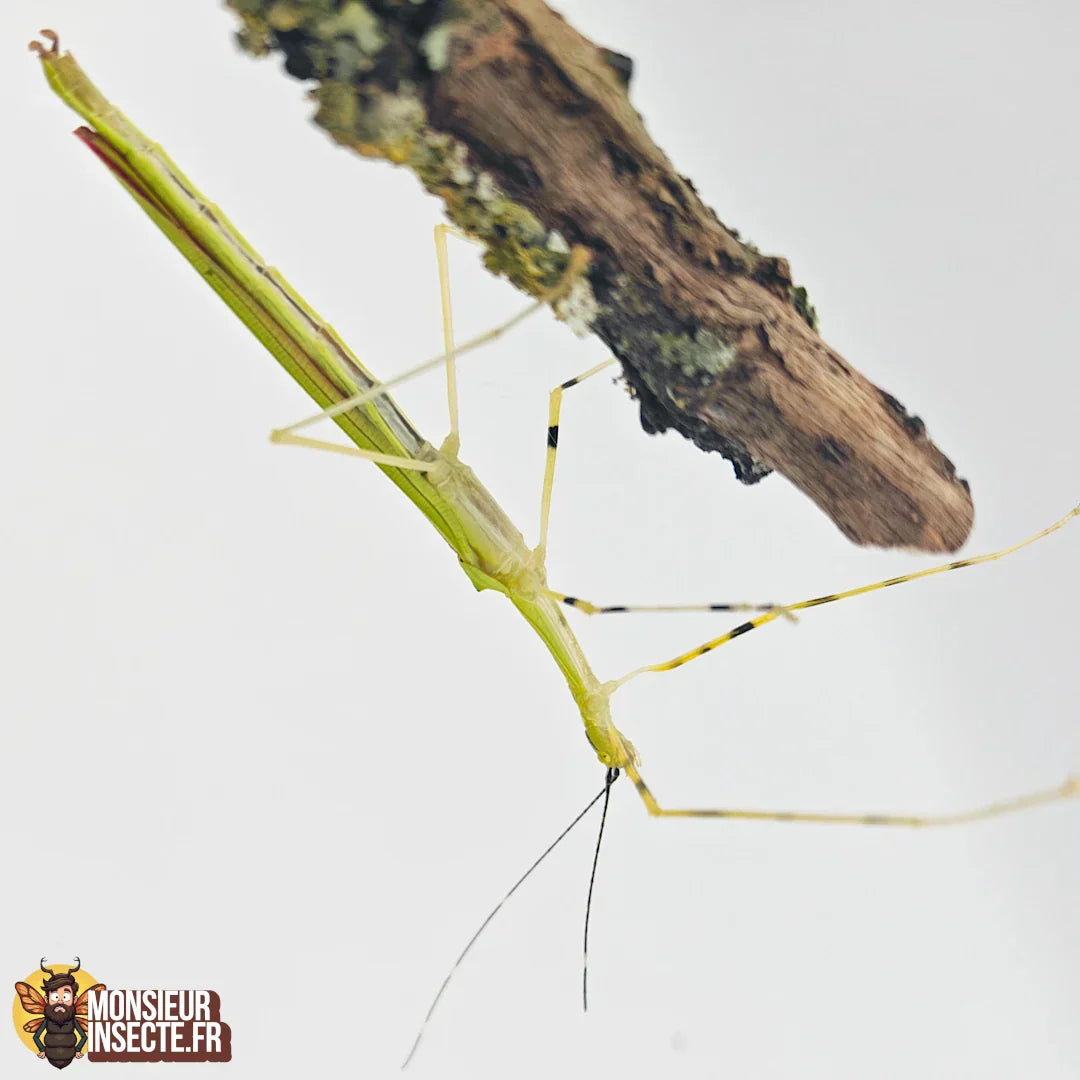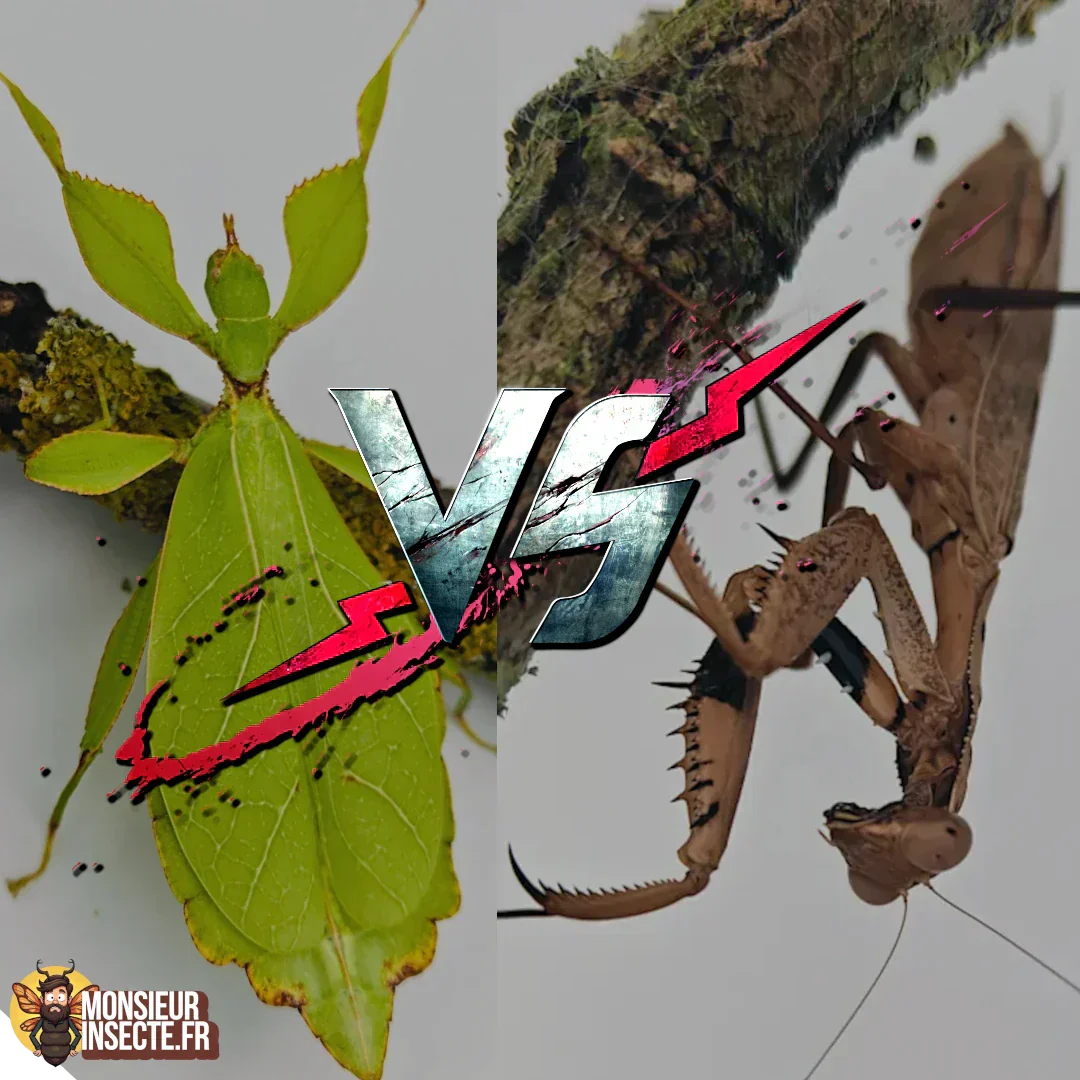What is a stick insect?
Stick insects are extraordinary insects known for their incredible ability to camouflage themselves by mimicking branches, leaves, or even bark. Their name comes from the Greek word “phasma,” which means ghost , a reference to their stealth and ability to go unnoticed.

The iconic stick insect, Carausius Morosus. Surely the most iconic species of the genus (on sale here)
1. Description of stick insects
These herbivorous insects have unique characteristics:
- Shape and color : Their appearance varies between a thin branch or flat leaf appearance to better blend into their surroundings.
- Size : Depending on the species, they measure from a few centimeters to more than 30 cm (like the giant Malaysian stick insect).
- Adaptability : They camouflage themselves not only by their appearance but also by their slow, rhythmic movement which mimics that of leaves in the wind.

Phyllium philippinicum, or leaf stick insect. A very different species from the stick insect, yet with the same behavior and family. (available here)
2. Where do stick insects live?
Stick insects mainly inhabit tropical and subtropical forests around the world, particularly in:
- Southeast Asia (Malaysia, Indonesia)
- South America
- Africa and Australia
However, some species also adapt to temperate environments.

The Eurycantha Horrida, this is where we get to the "serious" creatures. Perhaps my favorite species of all stick insects. A very aggressive appearance, with relatively dangerous spurs, but an adorable species, not aggressive at all towards humans and with a very peculiar behavior. This stick insect likes to hide and avoids the sun in particular.
3. Why are they unique?
Stick insects are true masters of mimicry :
- They can change color depending on their environment.
- Some species can even reproduce by parthenogenesis (without males).
- They are harmless, making them ideal insects for home breeding.

Peruphasm Schultei or Peruvian stick insect. Another species that has nothing to do with the previous ones. This one is entirely ebony black, with small blood-red wings. Although it is an arthropod, its external skeleton is very soft, which is rare for a stick insect. When touched, it feels like a caterpillar. Why? It defends itself differently, by secreting and expelling a nauseating and slightly stinging liquid from its thorax. (available here)
Why be interested in stick insects?
- Educational : Observing them allows us to learn more about evolution and adaptation.
- Easy to raise : Not very demanding, they mainly eat bramble, ivy or privet leaves.
- Captivating for enthusiasts : They attract by their behavior and their ability to blend into their environment.
I sincerely hope that this modest overview will inspire you to start breeding. When I started breeding arthropods, I had only a very limited interest in stick insects, which I saw as somewhat passive herbivores. What a mistake! In hindsight, the genus of stick insects even offers a diversity of behavior far superior to that of praying mantises. Give them a chance ;)




1 comment
Anne
Une première pour nous. Nino 11 ans a opté pour des phasmes comme cadeau d anniversaire 😉… plutôt sympa… En revanche on se questionne principalement sur la possibilité de mélanger 2 espèces dans votre kit, comme phasmes bâton et phasmes feuilles par exemple et le nombre d’ individus que l on peut y mettre au départ, sachant qu’il va y avoir reproduction. Notre deuxième question concerne l alimentation l hiver quand les feuilles viennent à manquer.
Merci, et à bientôt pour notre première commande 😉
Leave a comment
This site is protected by hCaptcha and the hCaptcha Privacy Policy and Terms of Service apply.